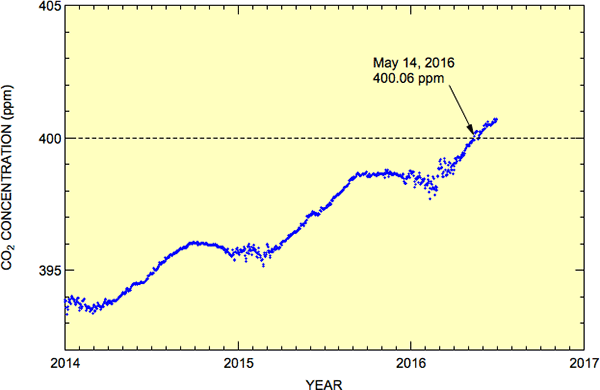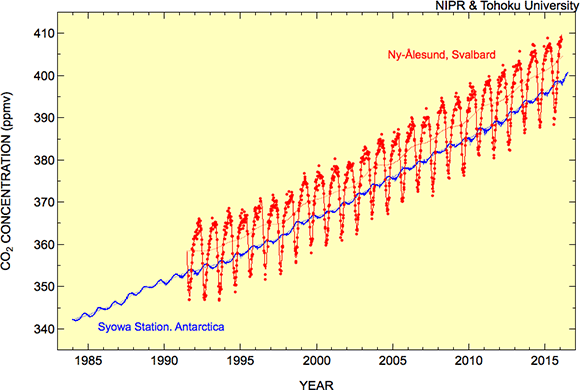National Institute of Polar Research
[Research Highlight] Atmospheric CO2 concentration at Syowa Station in Antarctica exceeds 400 ppm
Released on July 12, 2016 (in Japanese)
Posted on November 1, 2016
National Institute of Polar Research
At Syowa Station, Antarctica, the atmospheric CO2 concentration exceeded 400 ppm on May 14, 2016, for the first time since observations were initiated there in 1984. The monthly mean CO2 for June 2016 also exceeded 400 ppm. CO2 is one of the most important greenhouse gases, and global warming owing to the increase in atmospheric CO2 has become a serious problem worldwide. Therefore, it is crucial to continue monitoring atmospheric CO2.
According to the 57th Japan Antarctic Research Expedition (JARE)/National Institute of Polar Research (NIPR), a daily mean atmospheric CO2 concentration value of 400.06 ppm was observed at Syowa Station, Antarctica, on May 14, 2016. This is the first time that the CO2 concentration at Syowa Station has exceeded 400 ppm since NIPR and the Tohoku University in Japan initiated observations in 1984.
In addition, the monthly mean CO2 concentration value for June 2016 reached 400.51 ppm. CO2 is a greenhouse gas, and its atmospheric concentration is increasing owing to human activities since the Industrial Revolution. Global warming associated with the increase in atmospheric CO2 and other greenhouse gases has become a serious problem worldwide.
"The fact that an atmospheric CO2 concentration over 400 ppm was observed at Syowa implies that anthropogenic activities are definitely affecting the Antarctic region, even though Antarctica is far from the northern hemisphere where the population is concentrated,” said Daisuke Goto, an assistant professor at NIPR. CO2 has exceeded 400 ppm at many locations on Earth; however, the Antarctic was the only region where CO2 had not yet reached 400 ppm. "It is important to continue monitoring the atmospheric CO2 concentration," Goto emphasized.

Fig 1.
Variations in the atmospheric CO2 concentration observed at Syowa Station since 2014.
Credit: National Institute of Polar Research and Tohoku University

Fig 2.
Temporal variations in the atmospheric CO2 concentration at Syowa Station, Antarctica (blue) and Ny-Ålesund, Svalbard (red).
Dots, thick lines, and thin lines indicate the observed values, best-fitted curves, and long-term trends, respectively.
Seasonal variations at the Arctic are larger than those at the Antarctic region because the terrestrial biosphere consumes atmospheric CO2 via photosynthesis and its effect is stronger in the northern hemisphere than in the southern hemisphere.
Credit: National Institute of Polar Research and Tohoku University
Contact
Public Relations Section, National Institute of Polar Research
E-mail: kofositu@nipr.ac.jp








